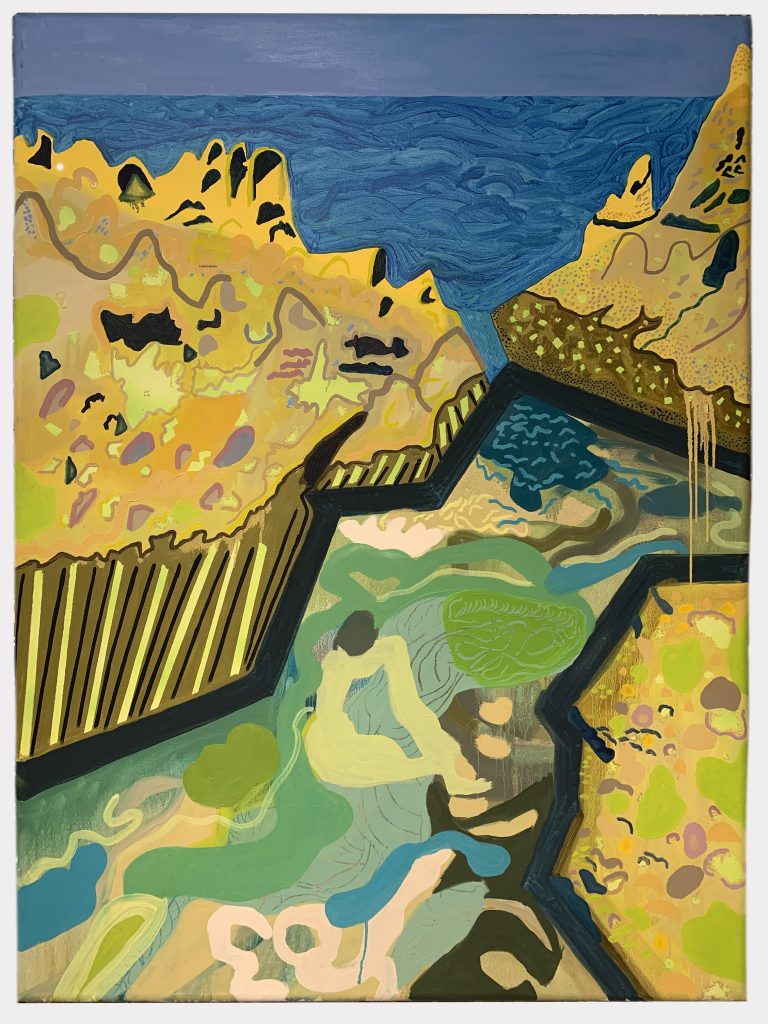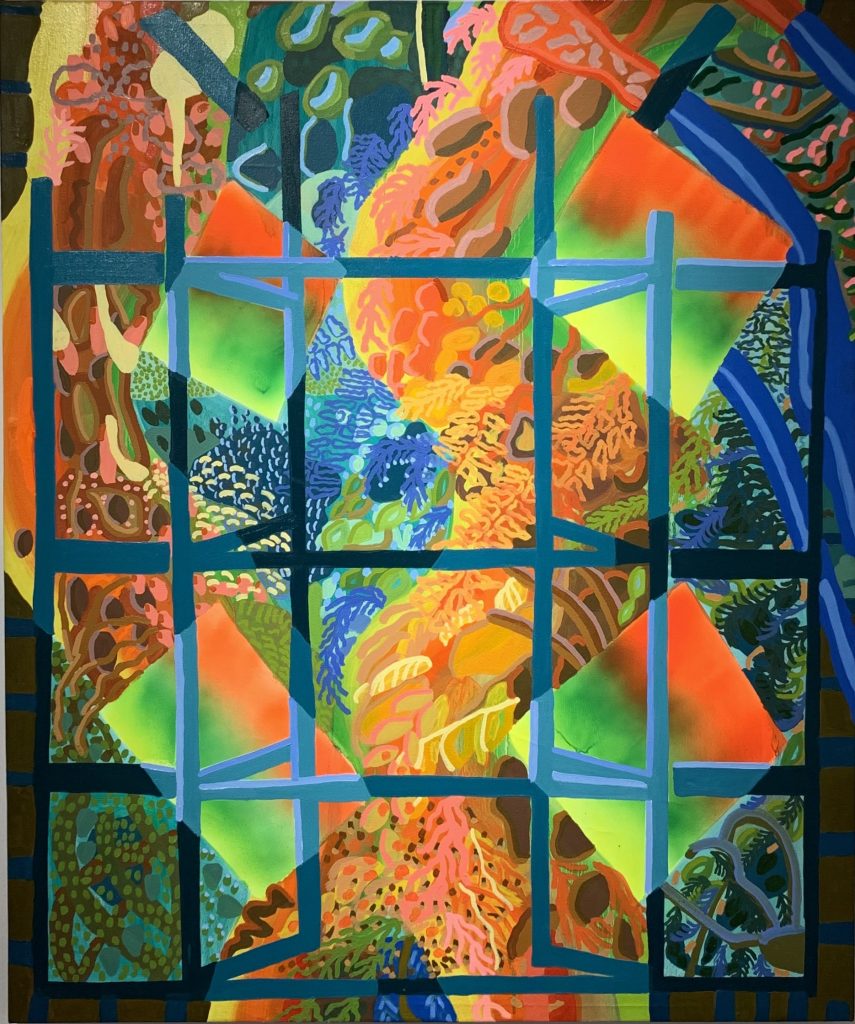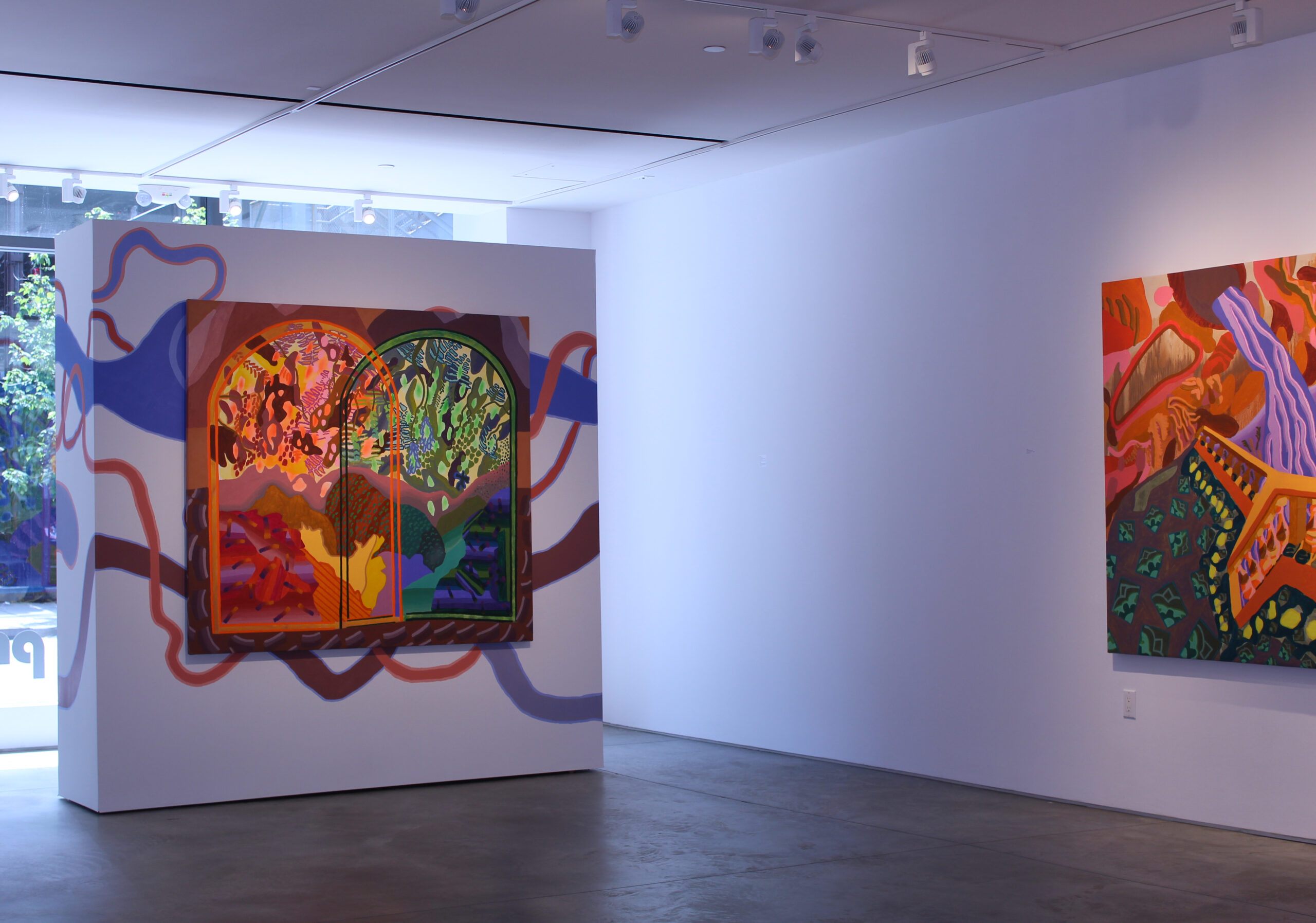Estefania Velez Rodriguez is a painter born in Mayaguez Puerto Rico and currently resides in Brooklyn New York. Her paintings are informed by contemporary education in Abstraction as well as personal digestion of cultural normalities within the United States of America. Finishing her MFA in painting with experimental studies in video media, she also creates sketch videos that address identity politics and time rupture. Her paintings formally address questions between abstraction, non-representation, simplification, symbol, and painting as a language with ambiguous structural limitations.
Estefania is interested in pushing the limits in her liminal identity structure; sometimes she can fly like a bird and other times she can only swim like a fish. The moments in which code switching through oral language, painted language, or physical makeup are successful are when navigation through multiple worlds can happen without drawback from the receiver.
Velez Rodriguez’s recent paintings are based on Borges’ idea of an infinite library, containing every possible ordering of just 25 basic characters (22 letters, the period, the comma, and the space). Though the majority of the books in this universe would be pure gibberish, the library also must contain every masterpiece ever written, all useful information, biographies of any person, and translations from all languages. Borges writes of those who seek the greatest answers to life in this library and those who burn another’s book, erasing their life story. Even acts of destruction are rendered pointless in that it is impossible to corrupt the library; it is so infinite that it surpasses time and the human race.
Like a compendium in this library, painting is a lifetime pursuit which in the end becomes a personal volume in a giant—perhaps infinite—library of images. Painting is, in this sense, futile—although many would go to great lengths to find the secret volume hidden in the stacks. In this exhibition, Velez Rodriguez creates combinations of characters, but beyond the written language she seeks to catalog uneasy alliances of layered gestures. These can be figurative, geometrical, landscape-reminiscent, linear, open field, curvilinear, bright, dull, scraped, piled, fast, slow: generating and speaking a personal language.












